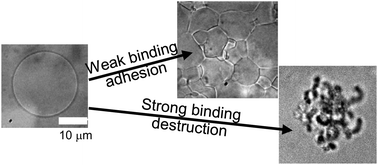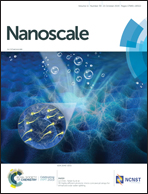Nanoparticles binding to lipid membranes: from vesicle-based gels to vesicle tubulation and destruction†
Abstract
While cells offer numerous inspiring examples in which membrane morphology and function are controlled by interactions with viruses or proteins, we still lack design principles for controlling membrane morphology in synthetic systems. With experiments and simulations, we show that spherical nanoparticles binding to lipid-bilayer membrane vesicles results in a remarkably rich set of collective morphologies that are controllable via the particle binding energy. We separately study cationic and anionic particles, where the adhesion is tuned by addition of oppositely charged lipids to the vesicles. When the binding energy is weak relative to a characteristic membrane-bending energy, vesicles adhere to one another and form a soft solid gel, a novel and useful platform for controlled release. With larger binding energy, a transition from partial to complete wrapping of the nanoparticles causes a remarkable vesicle destruction process culminating in rupture, nanoparticle-membrane tubules, and an apparent inversion of the vesicles. These findings help unify the diverse phenomena observed previously. They also open the door to a new class of vesicle-based, closed-cell gels that are more than 99% water and can encapsulate and release on demand, and show how to drive intentional membrane remodeling for shape-responsive systems.



 Please wait while we load your content...
Please wait while we load your content...
